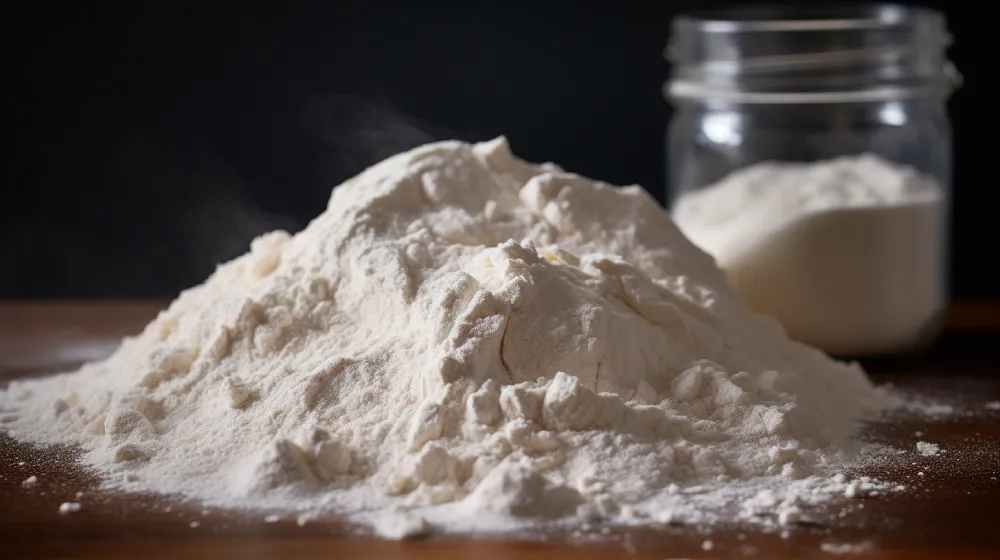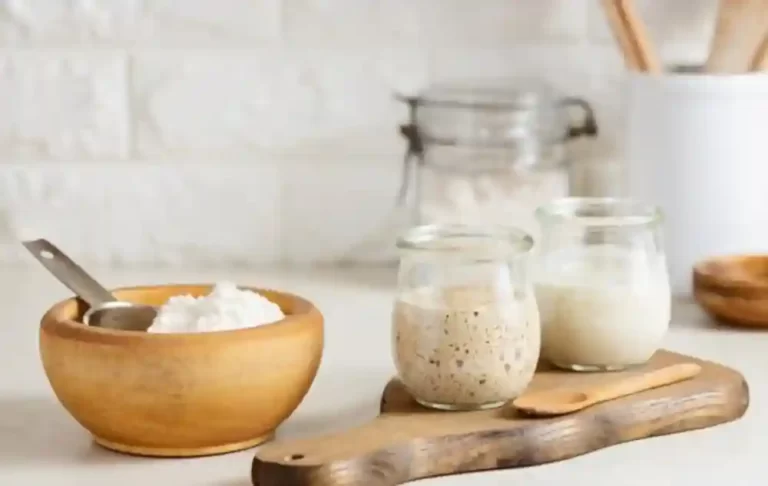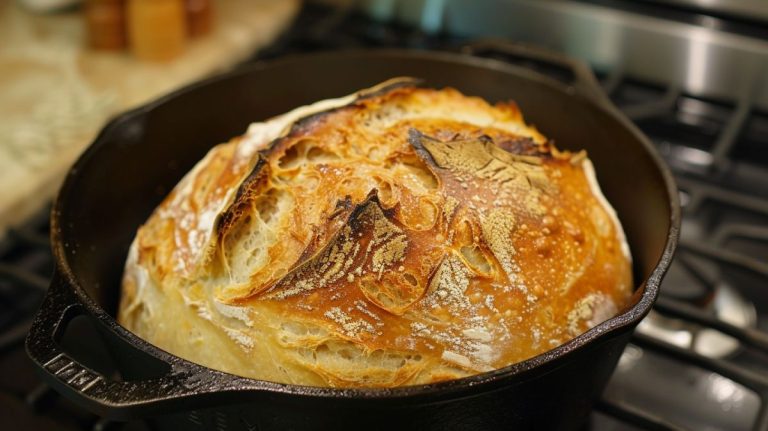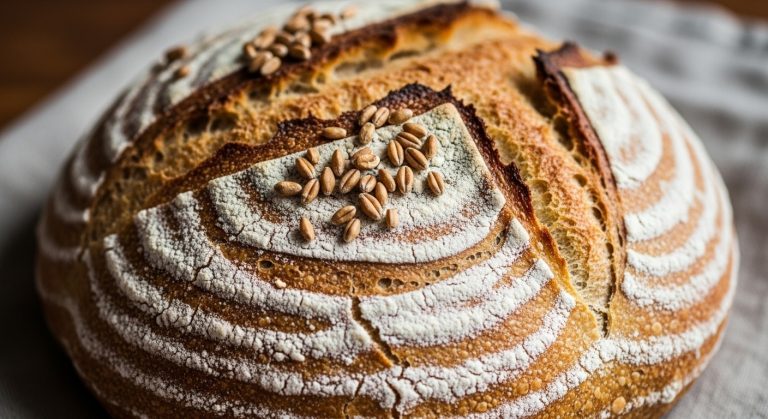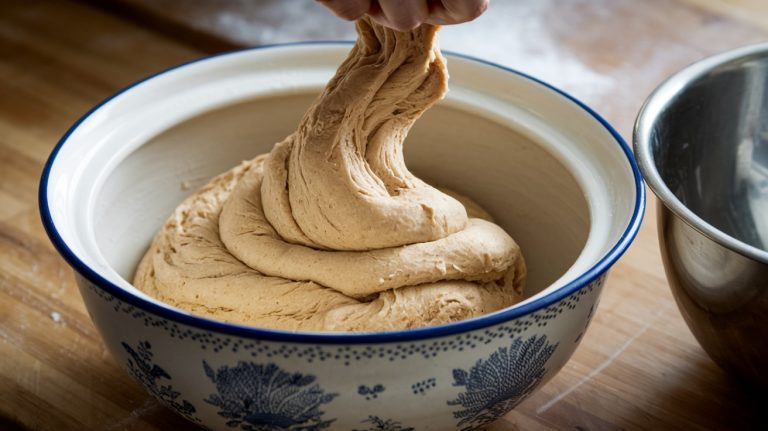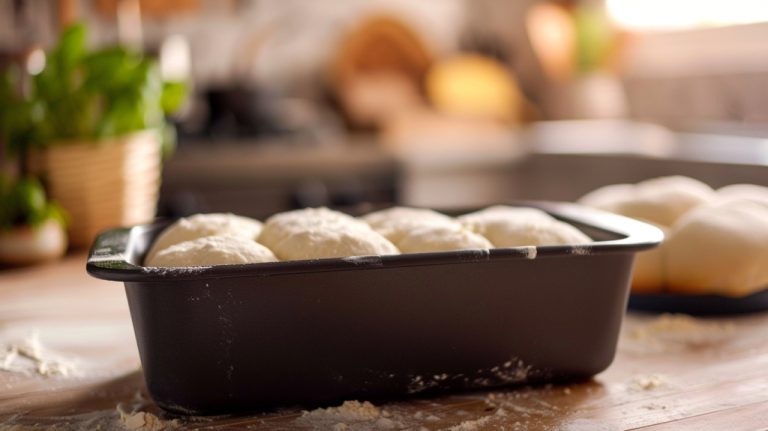Can You Make Sourdough Starter with All Purpose Flour: A Simplified Sourdough Recipe by AP Flour Way
Sourdough starter recipes often call for special types of flour, like rye or whole wheat, that can be hard to find. So, the question remains: can you make sourdough starter with all-purpose flour? Yes, you can.
Baking sourdough might be as easy as reaching into your pantry. It’s a staple in all kinds of recipes, isn’t it? Make it the star of your bread-making show.
It’s packed with proteins and carbohydrates that give yeast and bacteria what they need to thrive. While using other types of flour may result in a more complex flavor profile, all-purpose flour is more than capable of producing a delicious and bubbly sourdough starter.
Making the perfect loaf doesn’t take fancy flour or complicated techniques. All-purpose flour’s adaptability lets it shine in sourdough recipes.
It’s reliable and easy to find. Slowly but surely, it’ll help you make a lively, bubbly sourdough starter. Patience and care, combined with a meticulously crafted recipe, are all you need for perfection.
Let’s bake together if you’ve always wanted a perfect sourdough with all-purpose flour but didn’t think it was possible. We’ll touch upon essential tips to nurture it, potential hiccups along the way, and how to overcome them.
You’re about to be surprised by your all-purpose flour.
Is All-purpose Flour Okay for Starters?
All-purpose flour works great for sourdough starter. All-purpose flour is a solid and easily accessible choice for sourdough starter. There are plenty of perks to using this type of flour. Here are a few reasons why bakers love it:
Blend of Wheat: Comprised of high-gluten hard wheat and low-gluten soft wheat, all-purpose flour provides a supportive environment for sourdough starter to grow and thrive. This balanced blend makes all-purpose flour a reliable and consistent choice for sourdough starter.
Consistency: With all-purpose flour, you can expect steady and predictable results. It takes some of the guesswork out of managing your starter.
Nutritional Benefits: Rich in protein and carbohydrates, all-purpose flour feeds the yeast and bacteria effectively. Plus, it comes packed with beneficial vitamins like B and minerals such as iron.
Convenience: There’s a high chance you already have a pack of all-purpose flour in your pantry. It’s widely available, so there is no need to hunt down specialty flours to kickstart your sourdough journey.
Flexibility: Its adaptability isn’t confined to starters. You can use all-purpose flour for many baked delicacies, broadening your baking horizons. Whether you’re making a rustic loaf, bagels, or pancakes, all-purpose flour’s got your back.
Many bakers have successfully created active sourdough starters using all-purpose flour, so it’s a tried and true method. It should be noted that using all-purpose flour may require adjustments in the feeding ratio, but it is a small learning curve for a big reward.
Here’s a nutritional chart of all-purpose flour for reference:
Nutritional Overview: All-Purpose Flour vs. Sourdough Bread (made with All-Purpose Flour)
| Nutrient | All-Purpose Flour (per 1/4 cup or 30g) | Sourdough Bread (per slice, approx. 40g) |
| Calories | 110 kcal | 100 kcal |
| Total Fat | 0.5g | 0.5g |
| – Saturated Fat | 0g | 0.1g |
| – Trans Fat | 0g | 0g |
| Cholesterol | 0mg | 0mg |
| Sodium | 0mg | 150mg |
| Total Carbohydrates | 23g | 21g |
| – Dietary Fiber | 1g | 1g |
| – Sugars | 0g | 0.5g |
| Protein | 4g | 3g |
| Vitamin D | — | 0% |
| Calcium | — | 1% |
| Iron | — | 6% |
| Potassium | — | 25mg (1%) |
Percent Daily Values are based on a 2,000-calorie diet. Your daily values may be higher or lower depending on your calorie needs.
Note: The nutritional values presented can vary based on several factors, such as the specific type of all-purpose flour used, any additional ingredients, the fermentation process, and more. Consider using a dedicated nutritional analysis tool or software for precise nutritional insights.
The Process of Making Sourdough Starter with All-Purpose Flour
Now, let’s get down to business and create your sourdough starter using all-purpose flour. Follow these simple steps, and you’ll have a lively starter in no time.
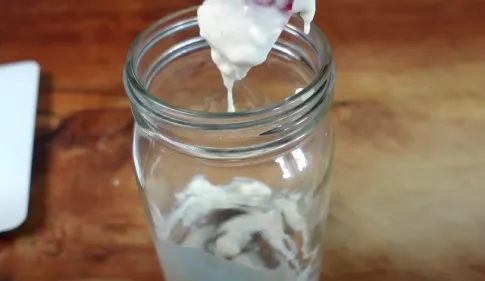
Starting the Starter Culture
Making a sourdough starter with all-purpose flour is simple. The only ingredients you need are all-purpose flour and water.
The process works because all-purpose flour has a good balance of protein and starch that feeds the yeast and bacteria necessary for fermentation.
In a glass or plastic container, mix equal parts water and all-purpose flour (e.g., 1 cup each). Cover loosely and let it sit at room temperature. After a day, you’ll see bubbles and experience a yeasty aroma, signs of fermentation.
Feeding and Discarding
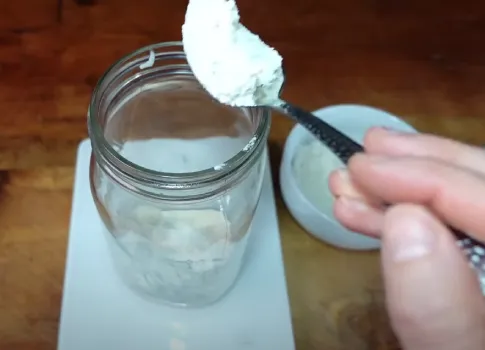
Keeping your starter healthy is essential. Regularly feed it with equal parts water and all-purpose flour. It will keep growing if you don’t discard part of the starter during feeding.
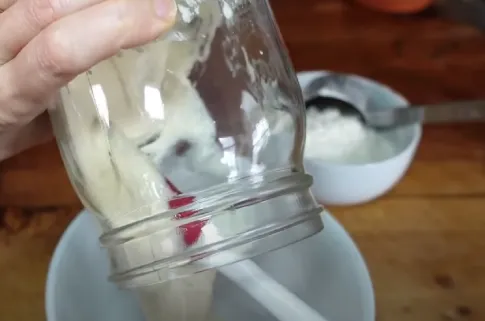
To maintain a robust starter, feeding it in a balanced ratio is vital. The starter will expand exponentially without discarding.
Feeding it would require an ever-increasing amount of flour, which is wasteful and impractical.
Using the Discard
Don’t throw away the discard! It’s still full of flavor and fermentation power. Use it in pancakes, waffles, muffins, or other baked goods for a delicious twist and zero waste.

If you don’t want to use the discard right away, store it in your refrigerator. It will stay good for a week, ready to add flavor and character to your baking adventures.
Making sourdough starter with all-purpose flour becomes accessible and rewarding when you follow these steps and understand the process. It will be a delightful journey, and you will create delicious bread!
Adjustments and Troubleshooting
Every sourdough starter is unique and may require adjustments to achieve the perfect flavor, texture, and rise balance. Here are some common issues that bakers encounter and how to troubleshoot them:
Managing the Starter Size
One of the challenges of maintaining a sourdough starter is its exponential growth if not managed. It’s crucial to adjust your feedings to suit your baking frequency.
If you bake less often, discard more starter before feeding. If you’re baking regularly, maintain a larger starter quantity. Remember, the goal isn’t to have many starters but to have a healthy, active one. You can also consider feeding it with half the flour and water to keep its size in check.
Water Quantity
All-purpose flour has a different protein content than other flours, which impacts its water absorption capacity. The right amount of water is essential to ensure the dough isn’t wet or too dry.
Start by adding water gradually until you achieve a thick but stirrable consistency. Your starter should resemble a thick batter, not a dough or liquid soup.
Flour Differences
Different flours behave differently. If you’re using all-purpose flour (or, as some call it, “plain flour”), be prepared to make minor tweaks now and then.
While all-purpose flour is versatile and great for beginners, those looking for a more robust flavor or texture might opt for whole wheat or rye. Try adding bit by bit to your starter and see how it affects the flavor and activity. Keep experimenting until you find the perfect balance.
Remember, switching flours can mean re-adjusting the water quantity. Add more water if your starter is too thick or not bubbling enough. Conversely, a little extra flour can help if it’s too runny.
Choosing the best all-purpose (AP) flour can be subjective, depending on individual preferences and the baking task. For consistent quality and versatility in bread and pastries, many bakers swear by King Arthur All-Purpose Flour.
On the other hand, Gold Medal is a reliable choice available in most U.S. grocery stores. Bob’s Red Mill stands out for its commitment to quality, offering vegan and kosher AP flour.
Meanwhile, Pillsbury Best is a staple in many kitchens, suitable for various recipes. For those baking in the southern U.S., White Lily is often the go-to for light and tender biscuits.
If you prefer organic options, brands like Arrowhead Mills and Whole Foods’ 365 Organic might catch your eye. Ultimately, the “best” flour can hinge on your specific needs, so experimenting with a few brands can help pinpoint the perfect fit for your baking adventures.
Bleached vs. Unbleached Flour
Bleached flour is treated to become whiter and softer. It might help your starter bubble up a bit faster at the start, but some say it can change the taste a little. Unbleached flour is just the natural, untreated grain. It might work a bit slower for your starter, but many bakers love its pure taste and consistency.
Foul Odor
Your starter should have a pleasant, slightly tangy aroma. If it smells unpleasant or rancid, discard it and start again. This odor can indicate bacteria growth or contamination from outside sources.
Mold Growth
While rare, mold growth can happen to sourdough starters. If you see any signs of mold, discard the entire starter and thoroughly clean your container before starting over. Ensure that all utensils and hands are clean when handling the starter to prevent contamination.
It’s okay to have gray liquid but not discoloration, pink formations, or mold.
A Few Reminders and Concerns When Diving into Sourdough
Stepping into the world of sourdough is a thrilling journey, but there are some key things to remember. Here’s a quick, easy-to-digest rundown:
- Allergens & Dietary Needs: Remember, sourdough contains gluten. Check if it fits into your dietary preferences, like vegan or vegetarian lifestyles. Always ensure you’re aware of any allergies before diving in.
- Source Matters: Think about where your ingredients come from. Better quality often means better bread whenever you can. Go for organic, non-GMO, or ingredients from local farmers.
- Goodness of Fermentation: Sourdough bread has many benefits, including better digestion, higher nutrient absorption, and anti-inflammatory properties. This fermentation adds flavor and can make your bread easier to digest, unlock more nutrients, and lower its phytic acid. However, like all bread, it is still a source of carbohydrates and calories. So, enjoy in moderation.
- Keeping It Fresh: Sourdough is all-natural, meaning no preservatives. Store it right to savor its freshness. A cool, dry place works wonders, and remember, it’ll be at its best for about 2-3 days.
- Add a Twist: Looking to add some excitement to your bread? Throw some seeds, herbs, cheese, nuts, or dried fruits. These not only change up the flavor but also pack in extra nutrients.
- Right Tools, Right Bread: A good baker has their trusty tools. Consider investing in essentials like a Dutch oven for that perfect crust or a dough scraper for easier handling.
- Keep It Clean: Your sourdough starter is alive. Treat it well by keeping its environment clean. Any contaminants could alter its flavor or, worse, its health.
- All About Hydration: Explore hydration levels if you’re up for a deeper dive. Different flours need different amounts of water. This tiny detail can change your bread’s entire texture.
- What to Expect: Sourdough made with all-purpose flour? It’s slightly tangy, has a soft crumb, and an unmistakable crusty exterior. That’s the taste and texture you’re aiming for.
Diving into sourdough is a mix of art and science. Remember these points, and you’re on your way to baking success.
Wrapping Up Our All-Purpose Sourdough Journey
Baking is as much about patience as it is about technique. Remember, every baker, from novice to expert, has had a loaf that didn’t quite turn out as planned.
The key is persistence. Each time you try, you learn a little more, and before you know it, you’ll pull a perfectly golden, aromatic loaf from your oven.
Have you got questions? Or a tip that made all the difference? Reach out. We’re here to guide you.
Remember, baking is better when shared. Whether it’s a triumph or a small hiccup, your sourdough tales can inspire others. So, let’s share, learn, and grow in our baking journey together.

